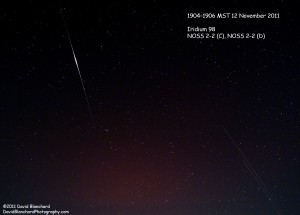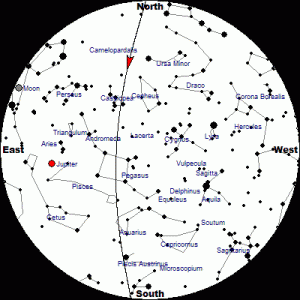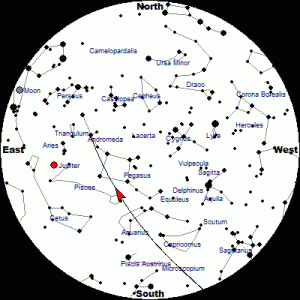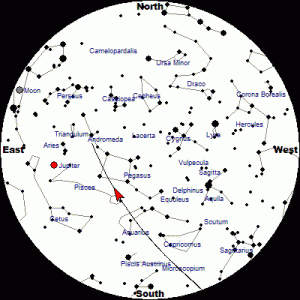With storm systems and cold fronts moving across the region last night the opportunity to do any sky watching seemed remote. And, yet, for a brief period, clear skies revealed the stars, moon, and satellites above northern Arizona.
First up was the X-37B at ~1805 MST. I watched — but did not photograph — this USAF spacecraft. I wish that I had because for a few seconds after it had passed maximum altitude it flared brightly – possibly rivalling Jupiter in brightness.

Next up was an Iridium 98 flare that was forecast to brighten to magnitude -6.5. This was easily captured by the camera but I was also able to capture two additional satellites travelling close together. A bit of investigation revealed that these were likely NOSS 2-2 (C) and NOSS 2-2 (D). NOSS is the Naval Ocean Surveillance System and these spacecraft travel in pairs and triplets.
I often use the information available at the Heavens-Above web site for satellite tracks and times. Below are the tracks for the Iridium98, NOSS 2-2(C), and NOSS 2-2(D) spacecraft.



There are hundreds of active satellites and thousands of objects (live satellites, dead satellites, and pieces of space debris) orbiting the earth. So it’s pretty easy to look up and see one of these moving across the sky. But it also makes it difficult to photograph the stars, planets, and other celestial bodies without getting a satellite track across the image.